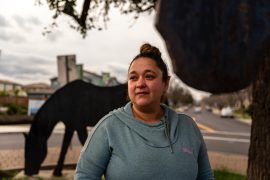Baby boomers are getting high in increasing numbers, reflecting growing acceptance of the drug as treatment for various medical conditions, according to a study published Monday in the journal Addiction.
The findings reveal overall use among the 50-and-older study group increased “significantly” from 2006 to 2013. Marijuana users peaked between ages 50 to 64, then declined among the 65-and-over crowd.
Men used marijuana more frequently than women, the study showed, but marital status and educational levels were not major factors in determining users.
The study by researchers at New York University School of Medicine suggests more data is needed about the long-term health impact of marijuana use among seniors. Study participants said they did not perceive the drug as dangerous, a sign of changing attitudes.
The study was based on 47,140 responses collected from the National Survey on Drug Use and Health.
Joseph Palamar, a professor at the NYU medical school and a co-author of the study, said the findings reinforce the need for research and a call for providers to screen the elderly for drug use.
“They shouldn’t just assume that someone is not a drug user because they’re older,” Palamar said.
Growing use of the drug among the 50-and-older crowd reflects the national trend toward pushing cannabis into mainstream culture. Over 22 million people used the drug in 2015, according to the Substance Abuse and Mental Health Services Administration. Eight states have legalized the drug for recreational use as well as medicinal use, according to Marijuana Policy Project, a non-profit advocacy group dedicated to enacting non-punitive marijuana policies across the United States. The drug has also proved to be a financial boon for state economies, generating over $19 million in September in Colorado.
Researchers also uncovered an increasing diversity in marijuana users. Past-year use doubled among married couples and those earning less than $20,000 per year.
More people living with medical conditions also sought out marijuana. The study showed the number of individuals living with two or more chronic conditions who used the drug over the past year more than doubled. Among those living with depression, the rate also doubled to 11.4 percent.
Palamar says the increase among the sick could be attributed to more individuals seeking to self-medicate. Historically, the plant was difficult to research due to the government crackdown on the substance. The Drug Enforcement Administration classifies the plant as a Schedule I substance, “defined as drugs with no currently accepted medical use and a high potential for abuse.”
Benjamin Han, assistant professor at the New York University School of Medicine and the study’s lead author, fears that marijuana used with prescription drugs could make the elderly more vulnerable to adverse health outcomes, particularly to falls and cognitive impairment.
“While there may be benefits to using marijuana such as chronic pain,” he said, “there may be risks that we don’t know about.”
The push and pull between state and federal governments has resulted in varying degrees of legality across the United States. Palamar says this variation places populations at risk of unknowingly breaking the law and getting arrested for drug possession. The issue poses one of the biggest public health concerns associated with marijuana, Palamar says.
But unlike the marijuana of their youth, seniors living in states that legalized marijuana for medicinal use now can access a drug that has been tested for quality and purity, said Paul Armentano deputy director of NORML, a non-profit group advocating for marijuana legalization. Additionally, the plant is prescribed to manage diseases that usually strike in older age, pointing to an increasing desire to take a medication that has less side effects than traditional prescription drugs.
The study found over half of the users picked up the habit before turning 18, and over 90 percent of them before age 36.
“We are coming to a point where state lawmakers are responding to the rapidly emerging consensus-both public consensus and a scientific consensus — that marijuana is not an agent that possesses risks that qualifies it as a legally prohibited substance,” he said.
KHN’s coverage of end-of-life and serious illness issues is supported by The Gordon and Betty Moore Foundation.
Correction: This story originally misstated the number of states that have legalized marijuana for medicinal and recreational use. The correct number of states that have legalized marijuana for recreational use is eight.






